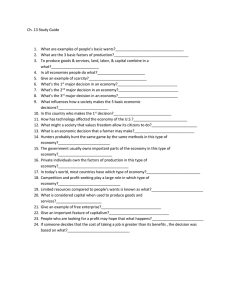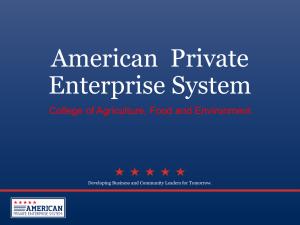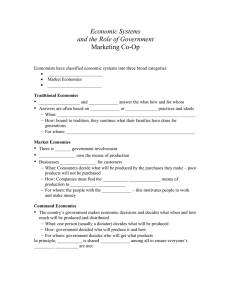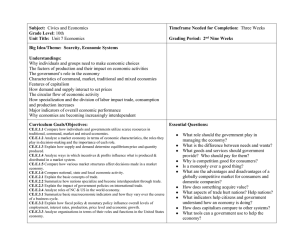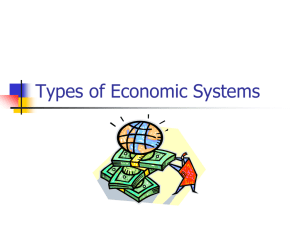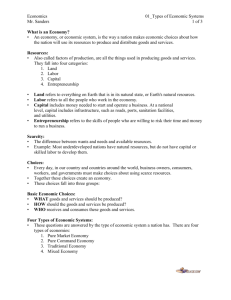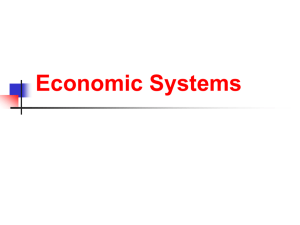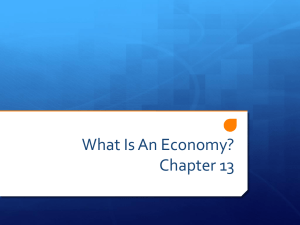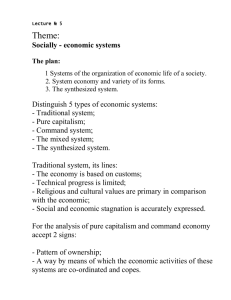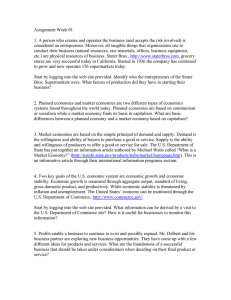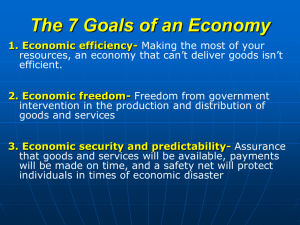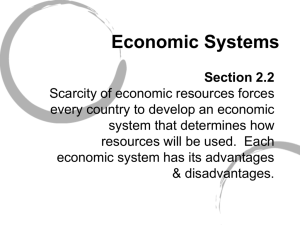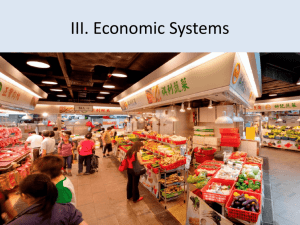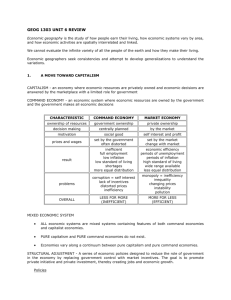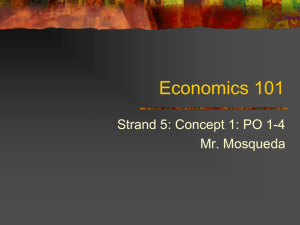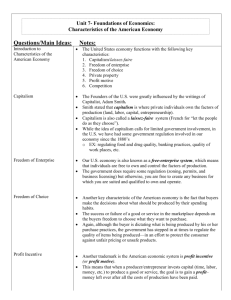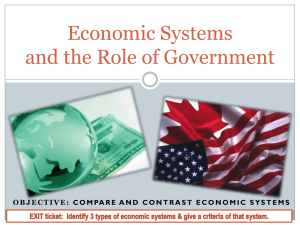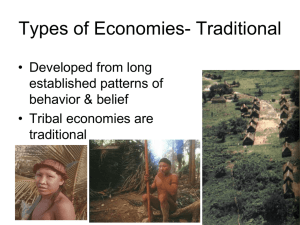Unit 6
advertisement
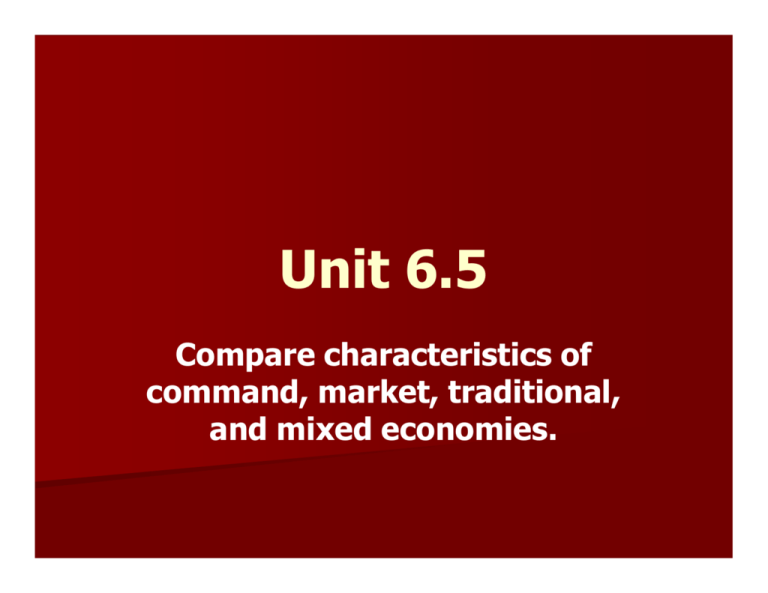
Unit 6.5 Compare characteristics of command, market, traditional, and mixed economies. Essential Questions: How does a market economy protect consumers? What are the advantages and disadvantages to consumers when the government intervenes in the economy? Why might a nation choose one economic system over another? Economic Systems Market economy Mixed Market economy Mixed economy Command economy Traditional economy Market Economy An economic system in which businesses and consumers, not the government, decide what is produced. It is also known as Free Enterprise or Capitalism. The economy is influenced by Competition, Supply, and Demand. No pure market economy exists, thus most economies in the world are Mixed. Most market economies exist in the western countries. Free Enterprise or Capitalism Capitalism generally refers to an economic system in which the means of production are all or mostly privately owned. Profit is the main motive. In a capitalist economy, “Greed is Good” because a person’s want to make profit will drive the economy. If a producer of a product creates and sells something the public does not want, the consumer will simply not buy it. The producer will go out of business. Adam Smith – “Father of Capitalism” Mixed Market Economy There is no pure market economy. Government assistance and planning is needed. The USA is officially a mixed market economy because people are free to consume and produce what they wish, but the government does control certain parts of the economy. Taxes, Social Security, Welfare. Mixed Economy A mixed economy is an economic system that incorporates the characteristics of several different economic systems. Usually combines a mixture of market (free) and command (government) economies. The individual will have the economic freedom of choice intertwined with government planning (like Social Security or free healthcare). Does this sound like the USA? Command Economy An economic system in which the Government controls everything in the economy. It is also known as a planned economy because the government plans every aspect in the economy. There is no private property or ownership. It is all shared by everyone. Karl Marx – “Father of Communism” Traditional Economy A traditional economy is an economic system in which resources are allocated by inheritance, and which has a strong social network and is based on primitive methods and tools. It is based on tradition, custom, and the way things have always been done. They have not changed very much over time. They are often called “Third World Countries” Found in agricultural parts of Asia, Africa, and South America. Basic Economic Questions What to Produce? How to Produce It? For Whom To Produce It? What to Produce? Society must decide what to produce with its limited resources. For example, society may have to choose whether to produce goods for defense or services for poor people. How to Produce? Society must decide how to produce something. For example, should we accept more pollution from factories in exchange for greater output of products? For Whom to Produce? Society must decide for whom to produce a product. Who will receive the goods and services? In the United States, most goods and services are distributed through the price system. How Much to Produce? Society must ask the question how much to produce because of scarcity. With limited resources, you must decide how much of something to produce.

